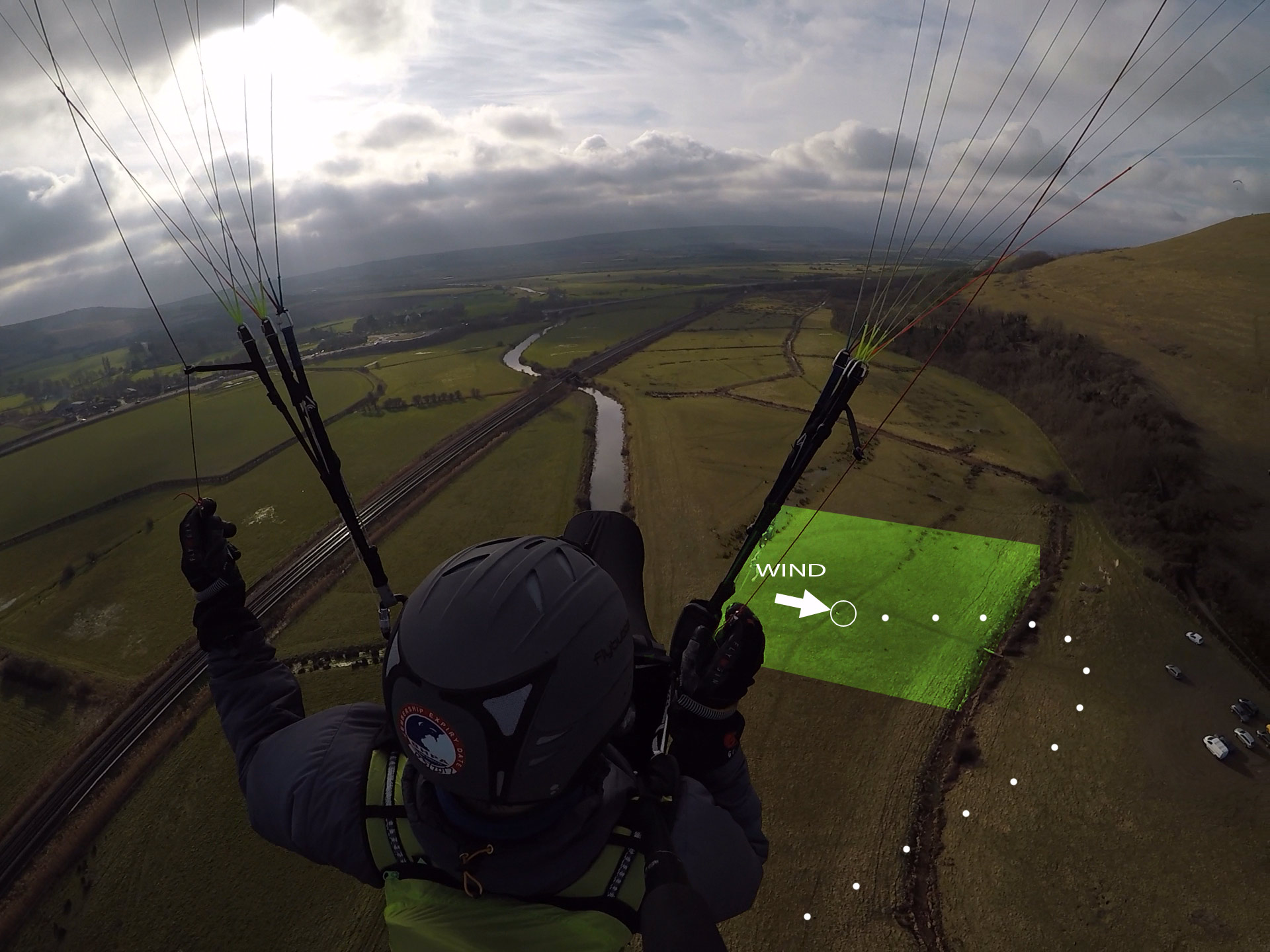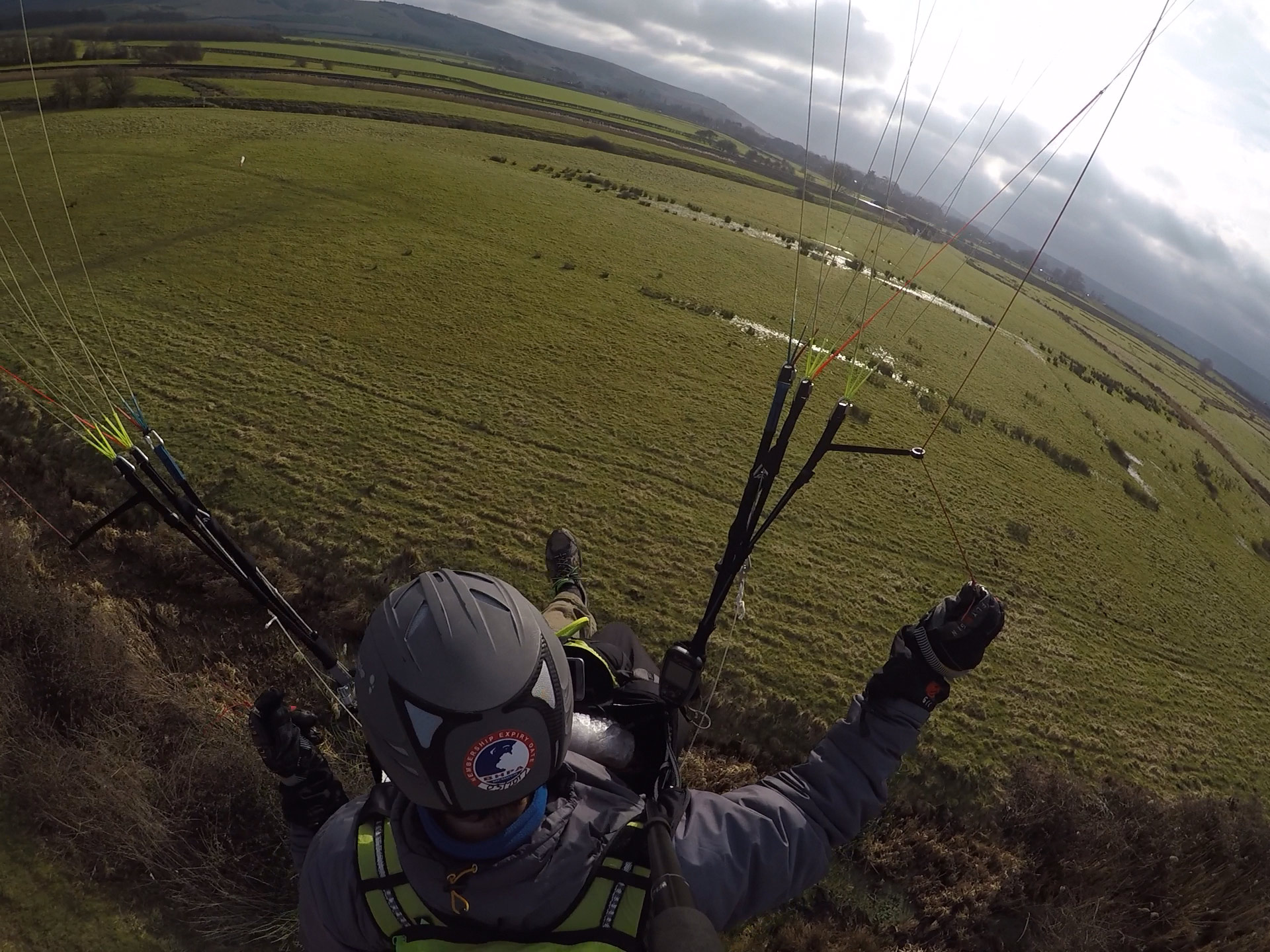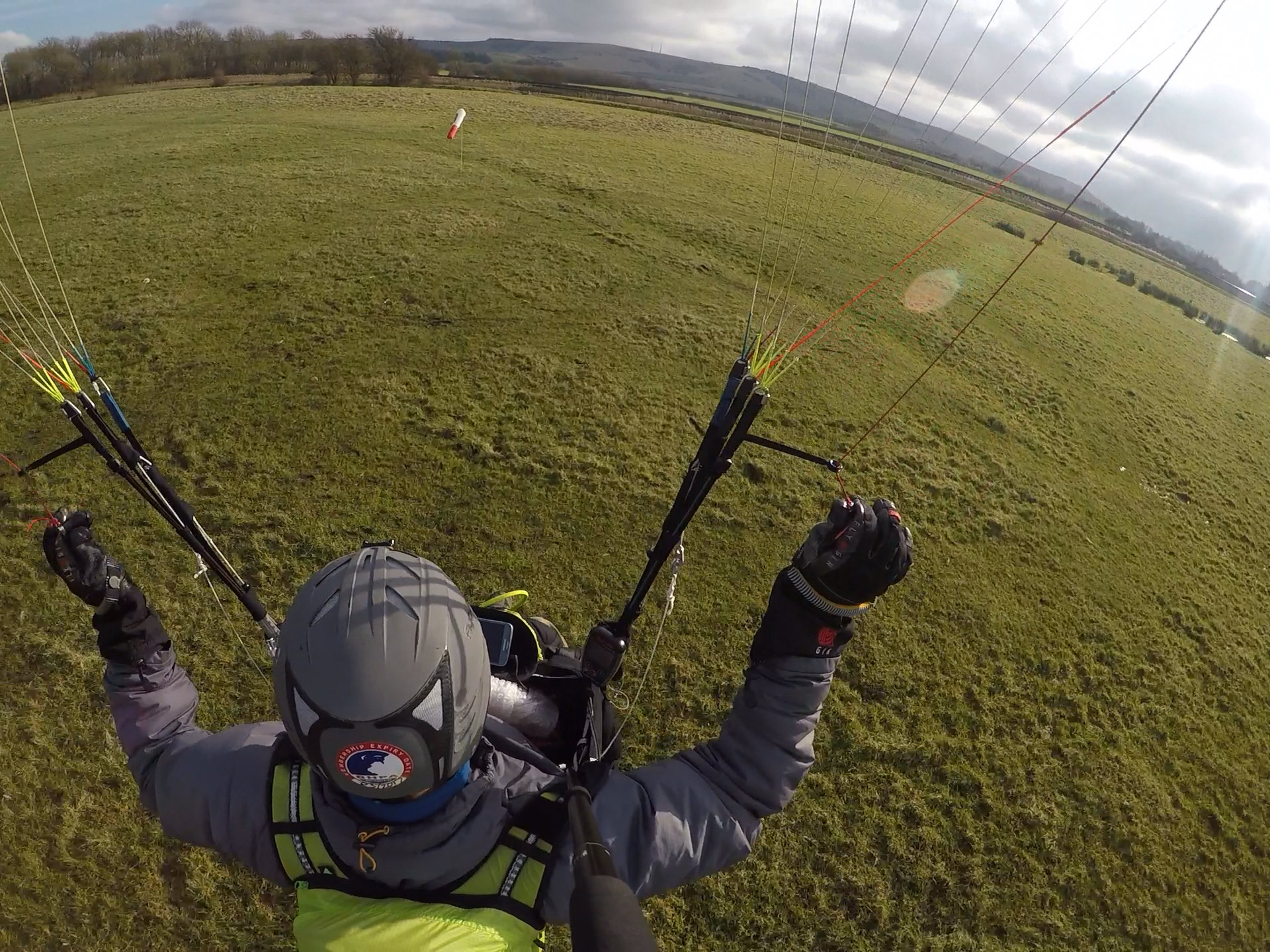
Being able to land softly, every time, is a great skill to have. It’s essential for cross country flying, when you don’t know what you’re going to be landing on. I’ve landed on everything from rocky mountain-sides and vineyards to carparks and golf courses. The setup remains the same regardless of the obstacles you encounter: it’s essential that you land pointed into wind, with enough speed to get a swoop out of your flare. By timing your touchdown correctly, it becomes more a matter of stepping onto something rather than swinging into it.
Normal landing approach
You might have local site rules that suggest where you need to approach landing to avoid conflict with other pilots. As long as everyone follows the same pattern there is no risk of collision. If you’re at the same height as someone else, initiate big ears early in your approach.
I usually check out my landing field from a position about 45 degrees above the windsock and to one side, pointing into wind. This gives me a good vantage to judge the movements of the windsock while reducing my groundspeed.

I'm picking up an idea of how gusty it is by watching the windsock over time. I watch how much the wind direction is changing, and how much the strength is changing.
If the windsock is hanging down a bit, I can approach from near the downwind edge of the landing field. If the windsock is stiff, I approach from the side of the field. If I’m hardly moving at this position I use the speedbar to push ahead to the upwind side of the field so I can back in safely using some brakes.
A common landing approach is the ‘figure 8’ landing, working off your height in long beats at the back of the landing field. Try to limit the number of beats you do, especially if there's traffic - in this situation it's better to lose your height further away from the landing field to avoid congestion. Alternatively you could do an aircraft landing approach where you lose your height in circling turns off to the one side of the upwind edge, then you do a downwind leg, across wind, and into wind at the end.
When the wind direction is changing a lot, the aircraft approach can leave you on the ‘wrong’ side of the field, committing you to a baseleg that has suddenly become rather fast downwind. If there's a lot of turbulence or wind in the lowest layer, the figure 8 approach might leave you too far downwind. This is why my default approach in XC flying conditions is to use a blend of the two, approaching from the side.

During landing approach, I've got quarter brakes on. This helps to slow everything down, not a lot, but by reducing your groundspeed you have more time to judge what is going on.
Getting low
Be careful of turbulence as you near the ground (the last 50m/150ft). The air close to the ground is usually slowed by vegetation and obstacles, the air above this layer is often moving faster, and there is some sheer turbulence in the transition. Keep your speed up as you go through this, to avoid a stall.
Legs down!

Once you have turned onto your ‘finals’ (pointing into wind, gliding to your spot) get your legs down early. It’s easy to get lazy with this, especially in a pod harness. But getting your body into a good landing position helps to prevent injury if you hit unexpected turbulence. It’s one less thing to think about.
In sinky, turbulent air, you don’t want to leave your turns too late, rather turn early and overshoot your spot (assuming you have the space).
Swoop!

About 15m/50ft up gradually increase your speed on finals to full trim speed (hands up). As you improve your paraglider control you can induce a gentle diving acceleration which gives you more energy to convert into the flare.
Keep your speed up until your feet are literally touching the grass. Going to full brakes at this moment should give you a metre or two of climb-out. Hold the wing in deep brakes, and descent almost vertically to your spot. Nice and soft.
Landing approach video
Want to see more? There's no better way to support our efforts than buying from us. We'll ensure you get great service! Choose from our huge range AND enable us to produce more videos and articles to benefit the freeflight community.

